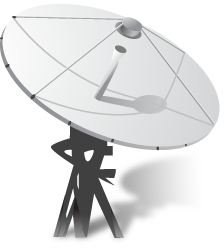Level of GPS Accuracy: Short-Term vs Long-Term GPS Accuracy
GPS Accuracy
The accuracy of GPS (Global Positioning System) signals can be categorized by the period of time in which they are acquired. In a short-term vs. long-term GPS accuracy comparison, we will see that short-term accuracy, also known as pass-to-pass accuracy, is computed over a short time such as every 15 minutes. Long-term accuracy, also known as static accuracy, is computed over a longer period of time, usually 24 hours.
Long-Term Accuracy
Also known as static accuracy, this type of accuracy is the most common way for the GPS industry in determining accuracy levels. It is determined by measuring the standard deviation of error of position receivers located in fixed positions. These measurements are typically done in a period of 24 hours. So far, this is the most trusted and most dependable way of determining accuracy of GPS signals because it is an exact science and can be proven using exact measurements.
Short-Term Accuracy
Short-term accuracy or pass-to-pass accuracy is a more precise way of determining accuracy levels of GPS signals. It is around 2 to 3 times more precise, which makes it more appropriate for more sensitive applications. However, it is quite difficult to measure. The measurements to get this accuracy are done every 15 minutes usually, and they are done by measuring the distance from one pass to another.
Performance
Long-term accuracy is not well suited for tracking constantly moving objects since the satellites that provide location data are also moving. The accuracy of GPS locations relies heavily on the position and configuration of GPS satellites: Within a 24-hour period, the length of time measurements for long-term accuracy and the position of GPS satellites vary. Hence that method provides a less reliable level of accuracy as opposed to short-term accuracy, which updates location data every 15 minutes. In that amount of time, satellite configurations do not change considerably, so the data they provide are more accurate.
The level of accuracy achieved with short-term accuracy is usually advertised to sell GPS devices for tracking heavy machinery used in industrial businesses like farming, even though long-term accuracy is easier to prove. Long-term accuracy’s readily available pieces of proof may be easy to obtain and present, but short-term accuracy presents a more compelling level of accuracy, especially for purposes that are critical in business, science, engineering, farming and other industries.
Signal Correction
Signal correction techniques are used for both types of accuracy levels, but this technique is more effective with short-term accuracy. A corrected signal used in pass-to-pass accuracy measurements can provide an accuracy of 6 inches These signal correction measurements are done by correcting errors like clock inaccuracies, satellite geometries and even changes caused by charged particles in the ionosphere.
Industry standards for measuring GPS signal accuracy are still being developed, so having a short-term vs. long-term GPS accuracy debate may not apply to all GPS devices from different manufacturers. Accuracy measuring and reporting are still different with different types of GPS devices.
References
Hest, David. FarmIndustryNews.com. On Target? Retrieved at https://farmindustrynews.com/target
John Deere website. REceivers - How Accurate Are They? Retrieved at https://www.deere.com/en_US/ag/servicesupport/tips/agmanagementsolutions/AMS-receivers-how-accurate-are-they.html#
University of Kentucky Biosystems and Engineering website. Standardized Accuracy Tests for GPS Receivers, retrieved at https://www.bae.uky.edu/precag/PrecisionAg/Development_and_Assessment/Phase%204/GPSaccuracy.htm
Mullenix, Daniel. Pass-to-Pass Accuracy vs GPS Drift. Alabama Cooperative Extension System, at https://sites.aces.edu/group/crops/precisionag/precisionag_blog/Lists/Posts/Post.aspx?List=68f5d60b-cac0-40b4-95de-b79bec84603b&ID=19&Web=1c09f29c-587e-4197-ae4e-470ff25db6be
Photo Courtesy of Wikimedia Commons / Supplied by DevCom
